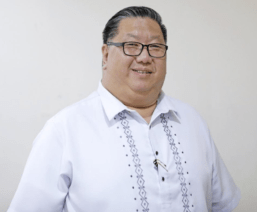FRESH VIEWPOINTS: A NEW PERSPECTIVE
By Brian James Lu

Across the nation, young Filipinos are leading the outcry against corruption in the Department of Public Works and Highways (DPWH). President Ferdinand R. Marcos Jr. himself revealed the existence of ghost and substandard flood control projects worth billions of pesos in public funds. This truth has sparked a wave of protests that peaked in the Sept. 21 rallies at Luneta and EDSA and spread to many communities beyond Metro Manila.
What has been uncovered is staggering: 9,855 projects worth about P545 billion have been flagged for anomalies, including nonexistent constructions, shoddy workmanship, and overpriced contracts. The cost continues to grow as more anomalies are uncovered all over the country.
The Senate hearings have exposed more people involved in stealing billions of pesos in public funds. The delivery of huge amounts of cash, stuffed into traveling bags, to various houses has shocked Filipinos. At a time when millions live in grinding poverty, it is unbearable to know that such money ends up in the pockets of politicians, contractors, and Department of Public Works and Highways (DPWH) officials and employees.
The massive corruption has stirred the youth all over the Philippines. Once thought to be lost in social media and far from politics, they are now finding their voice. Their anger and courage are rising at this moment of enormous upheaval. They know this is the time to stand up, to join the nation’s cry against corruption. They are taking their stand beside the President’s words: “I want to show that there is justice. I want to show that there is fairness. I want to hold these people accountable.”
For young people, corruption represents more than just numbers in a government report. These failed projects translate into real and devastating consequences—floods that disrupt schooling, damage communities, and steal away opportunities. They see in this scandal a betrayal of trust, a theft of their future, and an injustice that demands accountability.
The Sept. 21 mobilizations underscored this rising sentiment. In the morning, Luneta Park became a sea of placards and chants as students, youth networks, and activist coalitions of civil society organizations gathered under the banner “Baha sa Luneta: Aksyon na Laban sa Korapsyon.” By the afternoon, tens of thousands more filled EDSA Shrine and later converged at the People Power Monument for what was called the “Trillion Peso March.”
The numbers were remarkable—estimates ran as high as 70,000 in EDSA and 100,000 in Luneta—and among the multitudes, the presence of young people was unmistakable. Their speeches and slogans tied corruption to everyday struggles, making clear that wasted funds on ghost projects and substandard work mean continued vulnerability to floods, continued loss of livelihood, and continued insecurity for families.
The protests did not stop in Manila. News reports tell of rallies across the provinces where young people and local groups raised their voices against corruption. In Bulacan and Pampanga, students and youth demanded accountability from DPWH officials, while in Davao they questioned why floods persist despite giant budgets. In Iloilo, some 15,000 marched for change, while 5,000 in Baguio decried the misuse of public funds and the culture of impunity. Thousands also gathered in Palawan, Bohol, Angeles City, and Calumpit, Bulacan, while in La Union, about 1,000 joined the group Kilos La Union Kontra Korapsyon in condemning what they called a “rotting and corrupt system.”
Smaller but still significant indignation protests were likewise held in Tuguegarao City, Cagayan; Santiago City, Isabela; Bayombong, Nueva Vizcaya; Dagupan City, Pangasinan; Oriental and Occidental Mindoro; Legazpi City, Albay; General Santos City; Davao City; Roxas City, Capiz; Naga City; and Cebu City.
The youth, especially students, led these provincial protests, which were smaller than the Metro Manila rallies. Their message was clear: corruption is everywhere, and so is the fight against it.
What gives these youth-led actions a distinctive weight is the clarity and urgency of their demands. They are calling for full investigations of all irregular projects, for the prosecution of government officials and contractors involved, for the recovery of stolen funds, and for greater transparency in public budgeting and monitoring. They are insisting on higher standards in project implementation, independent oversight, and genuine accountability—measures they know will not come easily in a system long plagued by entrenched political interests.
Their participation is significant precisely because it disrupts complacency. Many of these young protesters are not career politicians or beneficiaries of contracts; they are students, workers, and community leaders who will live with the consequences of government failure for decades to come. Their voice carries moral legitimacy, amplified by their numbers and their ability to mobilize swiftly both on the streets and online. They have reframed the corruption scandal from a bureaucratic issue into a generational fight for justice, linking it to broader themes of climate change, education, and inequality.
The challenge now is to ensure that this energy does not dissipate. History has demonstrated that deeply rooted corruption networks can absorb mass outrage with promises of reform that never materialize. The youth know this, and that is why many of them are determined to sustain pressure not only through protests but also through sustained civic engagement—by monitoring projects, demanding transparency, and holding leaders accountable. Sept. 21 may have been a high point, but for the youth, it is only the beginning of a longer struggle.
These protests once again highlight the central role of the youth and students in moments of political upheaval. Just as the demonstrations of the 1970s, 1980s, and 1990s shook the political establishment, today’s young generation is once more at the front lines, leading rallies across the country and giving strength and voice to the people’s demand for justice.
In this fight against corruption, the youth are not merely protesting; they are asserting themselves as stewards of the future. Their voices remind the nation that accountability is not optional, that public funds must serve the public good, and that corruption, if left unchecked, will drown us all. Theirs is not just a call to punish wrongdoers but a demand to rebuild trust in governance. And as their chants echoed from Luneta to EDSA and across provinces, one truth became clear: the youth will not be silent.


